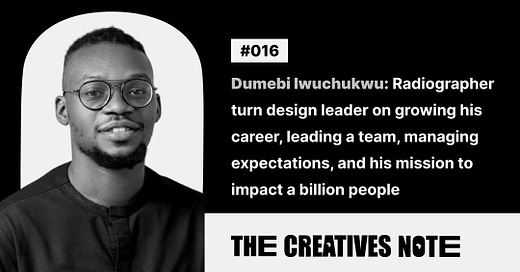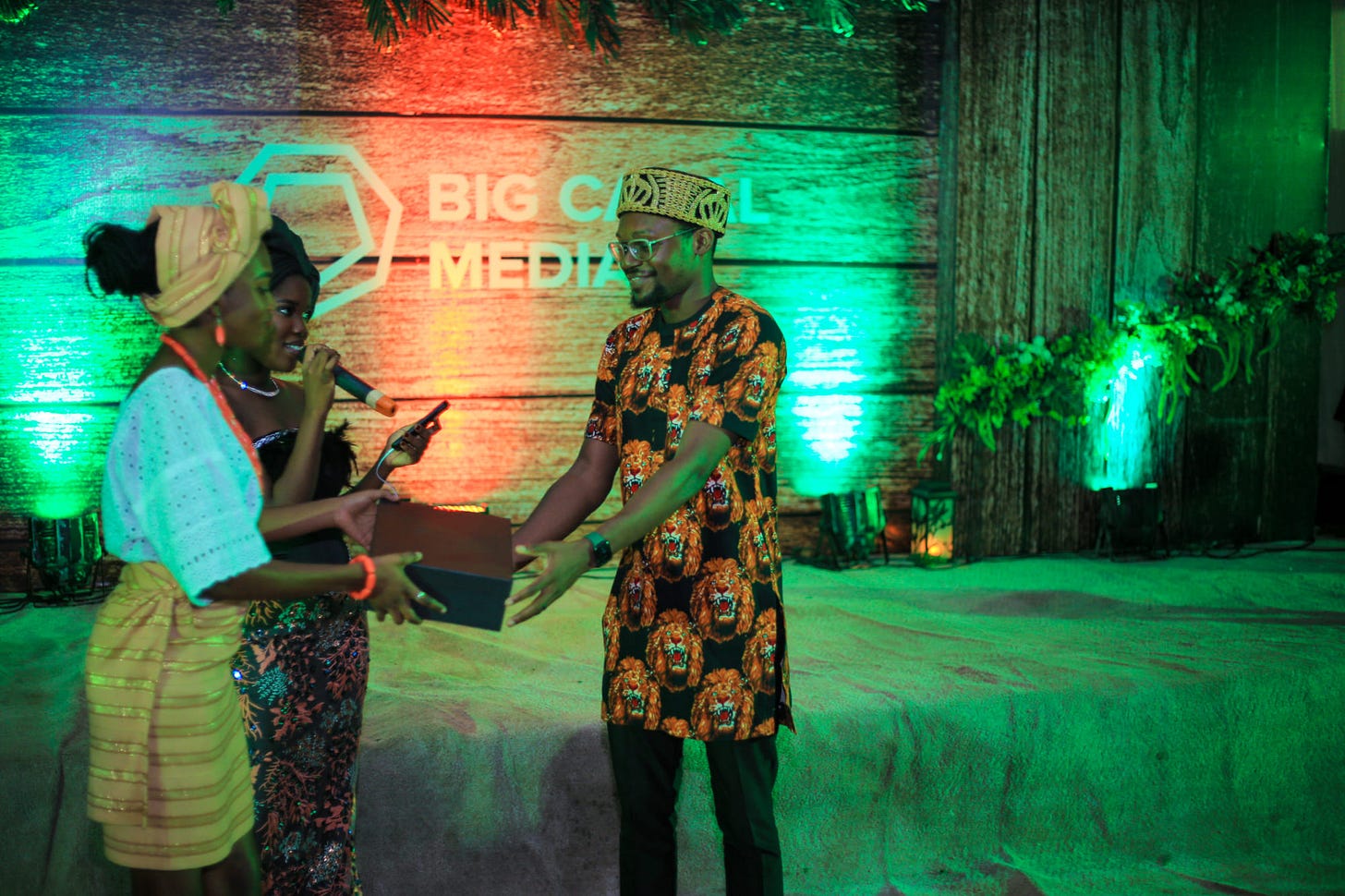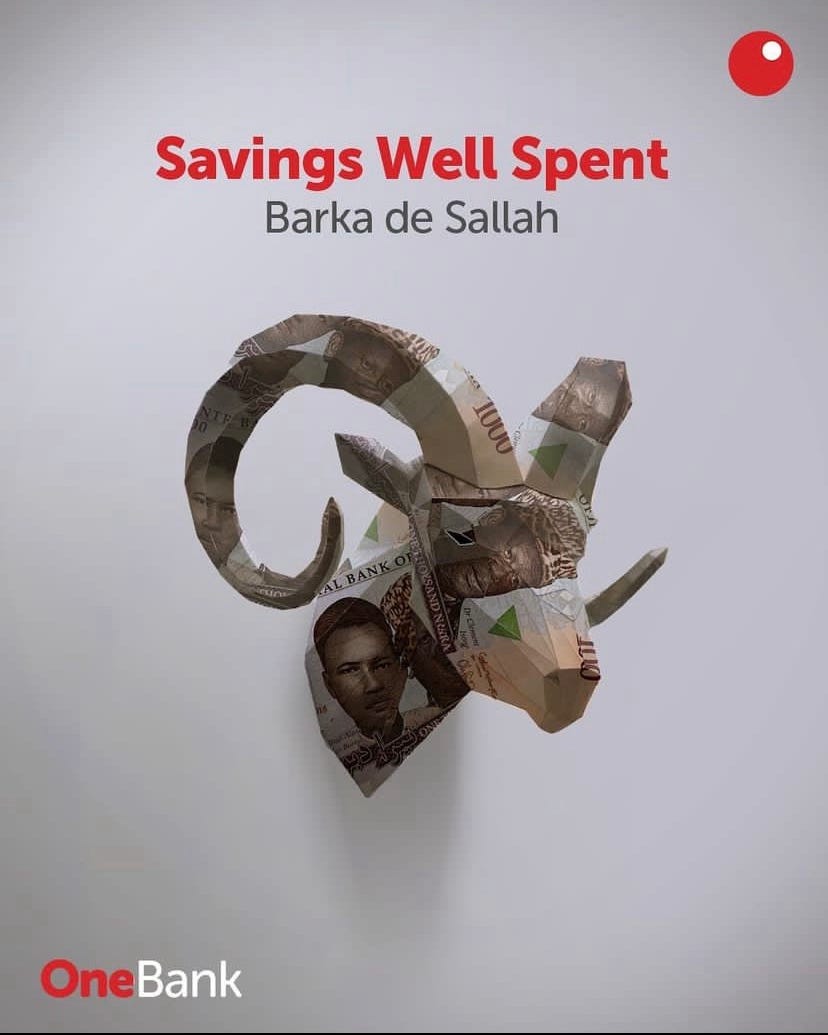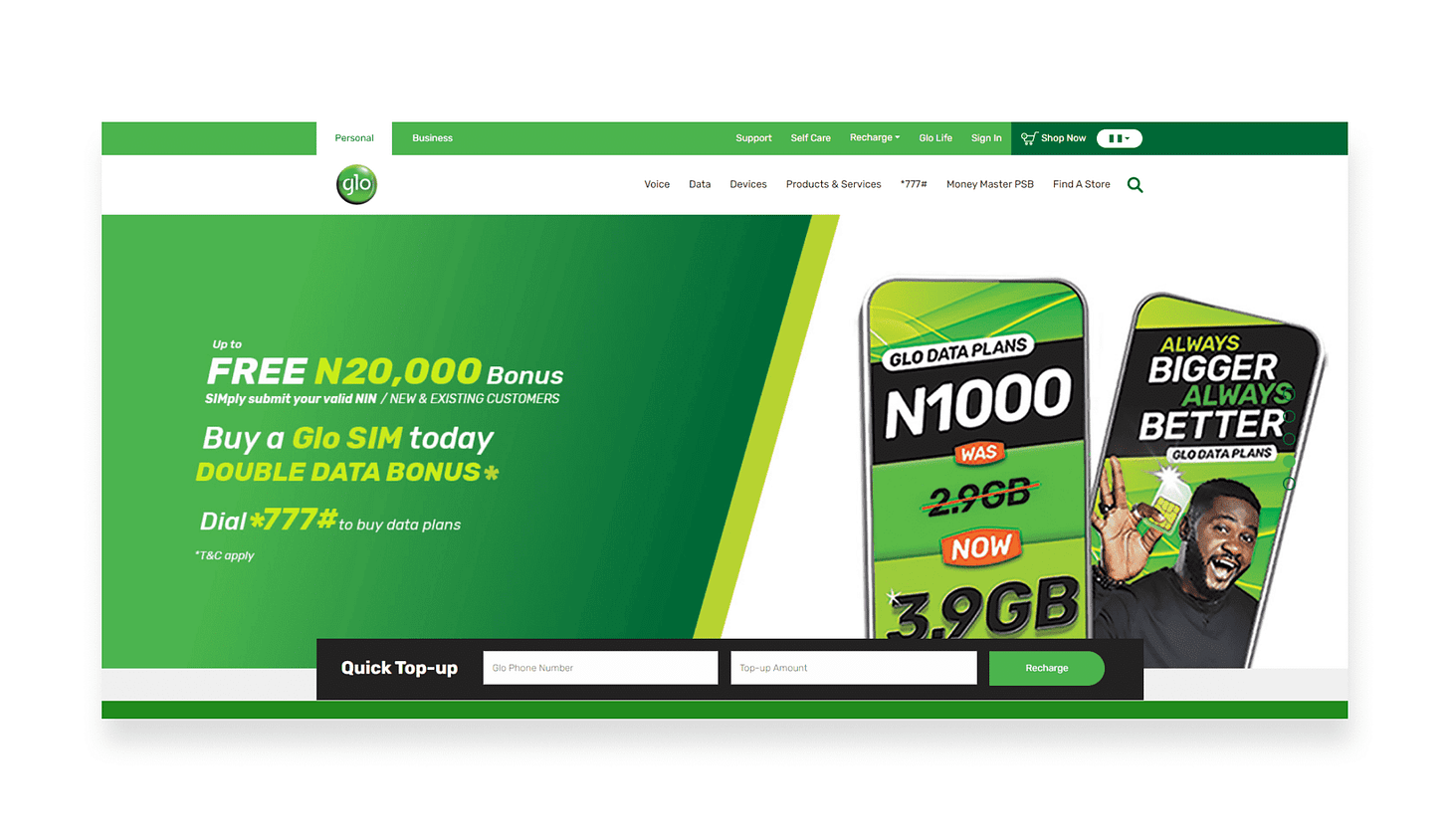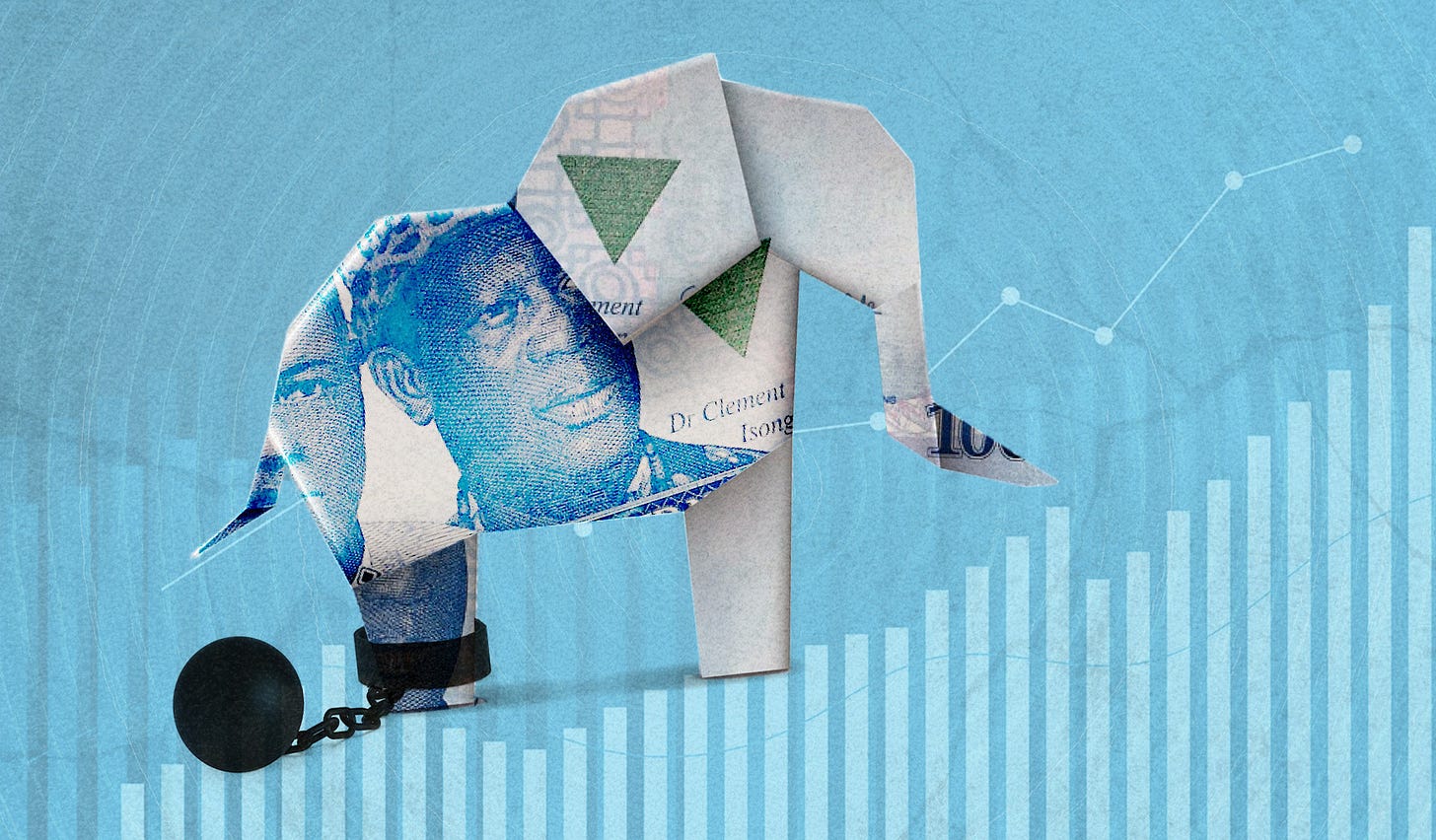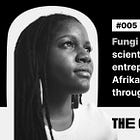Dumebi Iwuchukwu: Radiographer turned design leader on growing his career, leading a team, managing expectations, and his mission to impact a billion people — #016
After graduating from university in 2015, I worked as a radiographer for about two years before switching careers to design... I joined Stears as a Design Lead in Jan. 2023 and was recently promoted
Hi, thank you for joining us for another editionof our interview with African Creatives. In this edition, I spoke with Dumebi Iwuchukwu, Head of Design at Stears and a mentor at ADPList. He transitioned into a career in design after working as a radiographer for 2 years. In his design career, he has worked in a variety of settings, including as a freelancer, in-house with marketing agencies, in media, and for an airline in the USA.
If you are interested to know how he made the transition and what drives him, what it takes to lead a design team and how to handle expectations, the challenges he faces as a creative and how he navigates them, his favourite projects, the people that inspire him, and the people and brands he would love to work with, you should continue reading. You will definitely love and enjoy reading this!
Tell us about yourself
I am Dumebi Iwuchukwu, Head of Design at Stears and a mentor at ADPList. I am married and live with my wife and cat in Lagos, Nigeria.
In my design career, I have worked in a variety of settings, including as a freelancer, in-house with marketing agencies, in media, and for an airline in the USA.
After graduating from university in 2015, I worked as a radiographer for about two years before switching careers to design.
How did you get started with design? What led you to design?
Growing up I’ve always liked art, cartoons and drawing. I used to collect cutouts of ads and cartoons from my dad’s old magazines in a scrapbook my mom gave me when I was about 8 years old. I was also exposed to libraries and encyclopedias around that time so I used to read a lot and admire the graphics in the books, wondering how they were created.
But then I was a science student in secondary school and was not exposed to art courses except for geometry and technical drawing.
After secondary school, I wanted to study architecture. However, I failed my first attempt at JAMB. On my second attempt in 2009, I was admitted to study radiography. I had a laptop from my second year, but I only started to get interested in design during my third year, when I started designing for my fellowship on campus.
I designed mainly flyers and banners for them. We had a goal to make our notice board one of the centres of attention in school. We treated it like a magazine. We had unique headlines and sections. I was the creative director in the fellowship even though I didn't really know what that meant at the time. It was really cool because we had different columns and at some point had comics on there. At the beginning of every new session, we would design really cool flyers and paste them around campus. Some of the people who joined us said they did because of how cool the posters looked.
After I graduated, I worked as a radiographer for about 2 years before deciding to take an art direction course. During the course I was trained on designing for advertising. At the end of the course, I was the best graduating art direction student and won some awards so I was retained by the academy to teach. At this time, I also began learning product design by taking courses on YouTube and joining the Interactive Design Foundation. I worked there for about 9 months before moving on to join Isobar (now Dentsu Creative).
At Isobar, I worked on a lot of cool global brands. It was also the first time I experienced imposter syndrome. Ironically, I gave a presentation on creativity and imposter syndrome in my first month at the agency.
Some of the brands I worked on were Schweppes, Budweiser, Sprite, Nivea, and Three Crowns Milk. I had to immerse myself in each brand in order to design for them excellently. There was a lot of context switching and working long hours which was mentally and emotionally draining. The work was intense, and I eventually burned out and resigned in 2020 at the beginning of the COVID pandemic.
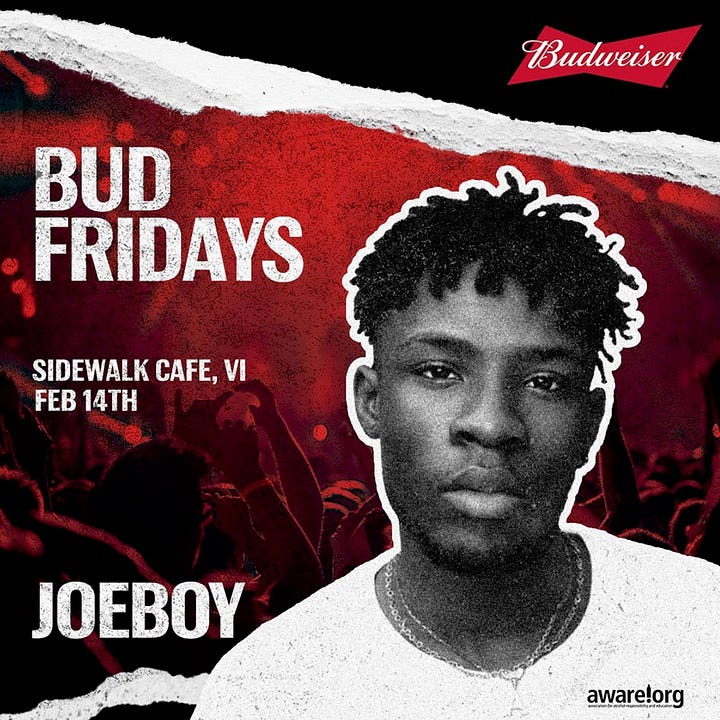
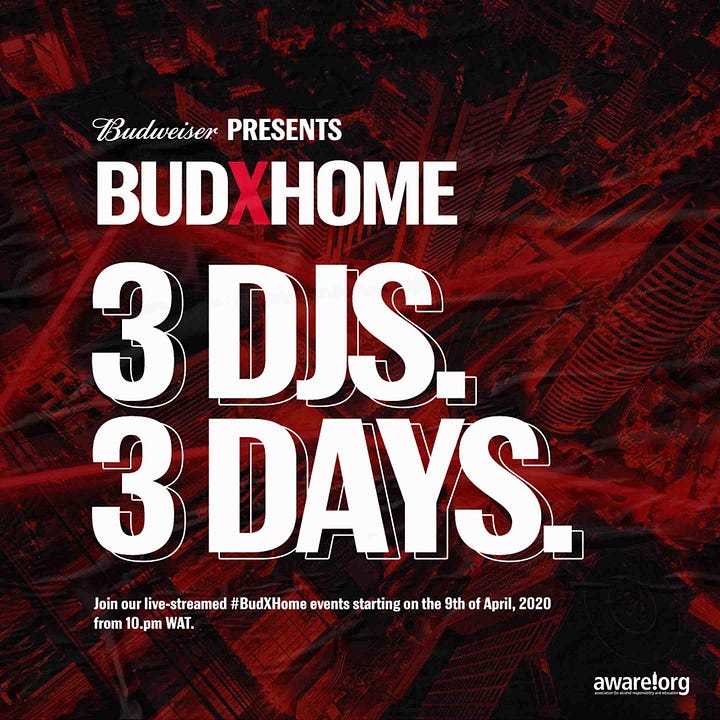
I took a career break after that and used the time to take courses and invest more in learning product design. After four months, I joined Webcoupers, who needed an art director with product design knowledge. I was a unique fit for the role at the time. Within my first three months, I worked on exciting projects such as designing Instagram AR filters and HTML5 interactive ads on Google Web Designer. I also designed some WordPress websites. While I was there, I supported the team that designed and built on the current Glo website, and I also designed social media campaigns for Sterling OneBank and Letshego MFB.
In 2021, I moved from Webcoupers to Big Cabal Media (BCM), the parent company of Techcabal and Zikoko. I was hired as Head of Design, which meant transitioning from being a hands-on designer to managing a team of designers, hiring new talent, conducting performance appraisals, and building a design team that could deliver high-quality work. I did some hands-on brand and product design here and there but most of my time was spent managing the team and projects. Towards the end of my time at BCM I was voted the Best Team lead.
I joined Stears as a Design Lead in January 2023 and was promoted to Head of Design in May.
How would you describe what you do to a 5-year-old?
I’ll show them a billboard or a game like Candy Crush and tell them I design/create how things like that look.
Design is nonverbal/visual communication.
What is your day-to-day routine? What does a typical day look like for you?
I work remotely most of the time, but as a manager, I sometimes have to go into the office. Earlier this year, I had to work from a co-working space because the lighting situation at home was not ideal. However, I recently purchased an inverter, which has solved that problem.
On a typical day, I wake up, pray, get ready, and start working right away. I usually attend a morning meeting with the editorial team to discuss what's going on and what we could write about.
After the morning meeting, I check my to-do lists. I use Trello and Clickup at work, but my personal favourites are the Apple Reminders app and pen and paper. I love the Apple Reminders app because it syncs with all my Apple devices, so I can see my reminders everywhere. For immediate tasks, I write them down on paper. As a designer, I find that I think more clearly when I'm writing on paper.
As a design manager, I attend a lot of meetings. Some weeks, I attend up to 20 or more meetings. This is because design management involves working with a lot of different teams across the business division. I need to be in sync with everyone in order to ensure that our designs are aligned with the company's overall goals.
My day is usually divided between meetings and my tasks. As a design manager, I still get to design, even though I'm at the management level. I get to design reports, article graphics, social media posts, data visualisations and presentations. I also get to work on product designs for the Stears website and app.
I have a small team of designers I collaborate with on their projects making sure the briefs are clear, taking away blockers for them, and providing the things they need to do their work. So you will find me chatting with people on Slack to make sure we're in sync.
By midday, I take a break to eat lunch. I enjoy cooking, so on days when I work from home, I either cook for myself or eat a meal my wife prepared. After lunch, I get back to working on my tasks and attending meetings.
I never seem to finish everything on my to-do list, so prioritising tasks is a critical part of my day. There are always competing demands from different teams, so I need to focus on what's most important for the business at any given time. I also need to make sure expectations are clear. In between all of this, I find time to do administrative tasks, plan and track projects, conduct performance appraisals, and hold one-on-one meetings with my team members.
At the end of the day, I relax by watching movies and documentaries on Netflix and spending time with my wife.
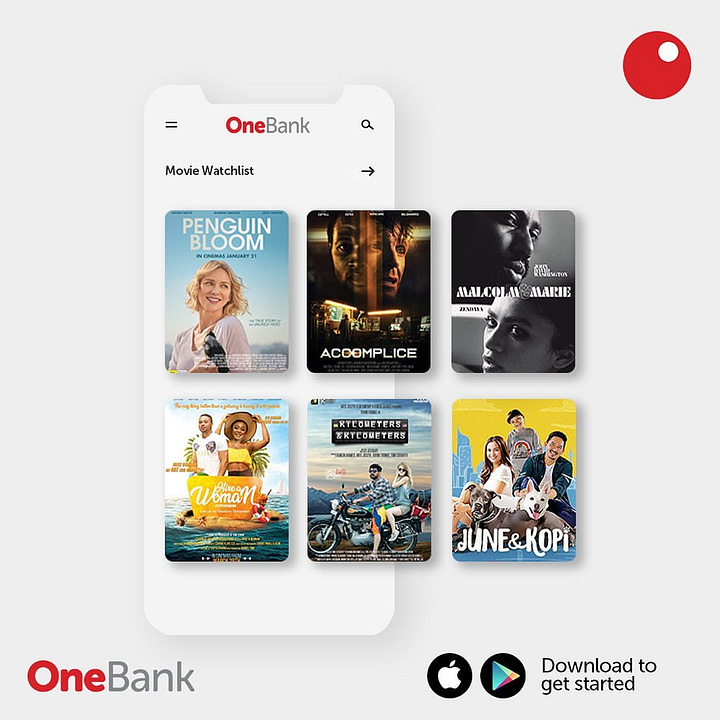

What do you enjoy most about what you do? What is the most satisfying thing about your job?
I actually enjoy two aspects of the job;
One, I enjoy seeing my work out there in the wild. I remember how I felt very good the first time I saw my design on a billboard. I stopped and took a picture of it. I probably shared it on my family’s WhatsApp group. There was also a time my friend travelled to Aba and sent me a picture of the billboard for a nationwide campaign I designed in 2020. This feeling also extends to product design projects like the Glo website I worked on at the agency and the Zikoko memes website I worked on at BCM.
The second aspect is that as a manager, I love seeing my team members grow within the company or join a bigger company in a bigger role. This is fulfilling to me, and I love seeing this kind of growth.
Related interview
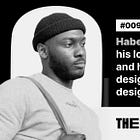
Habeeb Sanni: On his love for fashion and how it led him to design and leading a design team — #009
What is the best career investment you have made as a creative?
The art direction course I took in 2018 was a major investment in my design career. It helped me define the structure of my design process and learn how to design to meet international standards. The course also taught me that design is not just about aesthetics, but also about the process. From the brief to brainstorming, presenting ideas, refining, receiving feedback, and working with other professionals, I learned that creativity requires teamwork and that you can come up with great ideas by collaborating with others.
The second major turning point in my design career was joining an agency. This gave me the opportunity to work on international brands, which helped me design at a very high level. It also helped me validate myself as a designer and made me realise that I sabi this design thing. Additionally, I came to understand that my job as a designer is not to have all the right answers, but to ask the right questions that would help us find the right answer.
The third major investment in my design career has been the courses I have taken over the course of my career. I have invested a lot of money in my education, and I have learned a lot about being a better designer, manager and leader. I joined Coho, formerly On Deck, in 2022, and I have learned a great deal about the skills and mindsets necessary to lead a design team.
What are the challenges you face as a designer?
One of the biggest challenges I have faced is that some companies and clients do not understand the role of design. They see design as a means to an end, rather than an integral part of the business. This can be a major challenge, as it means that designers have to constantly fight to have their voices heard and their work taken seriously.
I am fortunate to work at Stears, where design is seen as a fundamental part of the company's DNA. This means that I am able to do my job without having to constantly explain the value of design to my colleagues. It is also a great feeling to know that my work is making a real difference to the company's success.
How do you usually navigate this challenge?
Communication is key. I make sure to communicate effectively with everyone involved in a project, from the CEO to the management team to the team members. This includes explaining the role of design and why it is important, as well as keeping everyone updated on the design process.
I have also had to learn to scope projects properly. Project scoping is a very important skill for designers to have. It helps with expectations. During project scoping, it is very important not just to plan for the time needed to design but to also plan for the time needed for ideating and feedback. Also, it is important to create a system of feedback that works, is transparent, and involves the necessary stakeholders.
What is your workflow and process for getting work done?
It is almost the same as everyone's but it varies and depends on the project I am working on.
The research starts from the briefing meeting. I ask a lot of questions to understand the ‘why’ and the goal of the project. After this, I do desk research on platforms like Behance, Dribbble, Pinterest, and Muzli. At this stage, I am basically looking at design patterns and how people have solved the challenge before. I also check for the accessibility rules to follow.
If I am working on a new product, the next thing I work on is the wireframes but most of the product design work I do lately involves designing updates so I just go straight to doing hi-fi design. Ideally, I like to present wireframes to stakeholders to get their input and buy-in to make sure I am working on the right design.
Once the design is done, I work with the developer to test the design to make sure it works across different devices and platforms and to make sure the product is usable and optimised for everyone across different devices.
For brand design, I make sure to understand the brief, look at references, start working on the layout, and continue to tweak and improve.
One thing in my process is that I always make sure to share with the stakeholders at every stage for feedback and continue to iterate until the final version is ready.
Check out: 10 African digital products and platforms you should know and use as a creative/creator
What part of this process do you enjoy the most?
The presentation because it gives me the opportunity to tell the story and explain the creativity behind the work. It also allows for feedback.
What are the essential gadgets, tools, and software you use for work daily?
For software, I use the Adobe suite. Adobe Photoshop is my favourite tool because of the history I have with it in advertising. I use Illustrator and InDesign. I do a little bit of motion design with After Effects and Premiere Pro. I have also used Adobe Audition before. I also use Canva to create social media templates.
Other softwares/apps I use are Figma, Figjam, Miro, Google Suite (Sheets, Slides, and Doc), Slack, Google Meet, Stears app, Notion, Arc Browser, Trello, ClickUp, Cron Calendar, Apple reminders, and notes app.
I listen to Jazz and lo-fi music when working on Apple Music and to Podcasts on Spotify.
My current hardware setup for graphic design includes the 2022 M2 MacBook Pro, a 29” LG ultra-wide monitor, an Apple keyboard with a numeric keypad, the Apple mouse, a Huion graphic tablet, and an iPad mini 6 with an Apple Pencil. I also use an Apple Watch to help with reminders and as a timer. And most importantly my Teaillo table and kidney chair.
How did the Covid-19 pandemic and lockdown impact you and the work you do as a creative?
The pandemic in itself is an unfortunate situation but one thing it did was accelerate the adoption of remote work. Before then, only international companies allowed remote work while most Nigerian companies wanted onsite work.
I have been working remotely since the pandemic and it has improved the quality of my life. It has given me the chance to spend more time with my family and friends and have a better work-life balance.
The pandemic also helped people understand how frail the human body is and made people understand more about mental health, and workplace dynamics and become more health conscious.
It also allowed me to upskill because I resigned from my job at the beginning. So I had time to learn and upskill.
How do you handle downtimes, pushback, and rejections as a creative?
For downtime, it depends on why I am not feeling so good. Something that has helped me is that I have learnt to be transparent to my manager right from when I was an art director to now that I am a team lead. I make sure to communicate that I am overwhelmed and need help. I have found out that when I struggle the most is when I do not reach out for help and ask questions. I have learnt to ask questions, speak to people and ask for help. And sometimes I just need to close my laptop and get some rest or sleep.
I also found out that I have become more creative since I started resting more. Now, I don't work weekends and my life has improved greatly. If I work on weekends now, it's because I choose to and not because I have to.
When it comes to pushback, I listen to the person because I always view feedback from the lens of the problem we're trying to solve but when I feel like the feedback is misplaced, I try to understand why and most times it is probably because I didn't understand the brief or was working on something else. So I have learnt to sort between relevant and irrelevant feedback because design can be subjective. There's no need to be rude to the person because the person is speaking from their own point of view, so I try to understand the merit of their feedback.
I gracefully accept the ones that will improve the work and if it's one that will take us back, I explain why it will not work no matter who it is coming from. But there are times the client insists this is what they want. I have learnt not to associate with such works. The whole point of feedback is to make the work better.
As for rejections, especially job rejections, one thing I learnt was to be unemotional when applying for jobs. For example, I applied for 63 jobs in 2021. 61 were international jobs while 2 were Nigerian companies. I got rejected from all the 61 international jobs, chose to drop out of the interview process for the second Nigerian company and eventually got to join Big Cabal Media.
What helped me deal with the rejections was that I had a Notion database that I used to track my applications. This process of documenting it made it mechanical for me as I just moved on to the next one. Interestingly, one of the companies I applied to paid me for the interviews I did but still rejected me at the end. They sent me one of the ‘best rejection mails ever’. Another one of the companies also rejected me at the final stage of the interview before I eventually got the Big Cabal Media role. Later on in the year, I got a contract with one of the international companies that I applied to. In summary, keeping records helped me. Also, one has to be intentional about managing the pain of rejection and understand that it’s part of life.
What is the task you don't enjoy doing but you have to do?
That would be hiring because it's a lot of work. Having to prepare the hiring materials and do interviews and assessments is a lot. And also the part about rejecting people is tough but I have learnt to be objective.
What are the most exciting projects you have worked on?
The Stears elections project which I contributed to is one of my favourites because of how important it is. It helped with tracking election results in the just concluded Nigerian elections.
I enjoyed leading the redesign of Zikoko and Zikoko Memes’ websites during my time at BCM.
I also enjoyed being a part of the product design team that worked on the Globacom website in 2021.
I am also proud of the social media designs and art direction I did for Budweiser Nigeria, Nivea Men, and OneBank by Sterling.
How do you stay creative and motivated to keep creating?
I think it’s in my nature to create. Despite the fact that I went to a special science school and didn't do art or art-related subjects, I just loved to draw and do something creative. I have always loved animations and cartoons. I just love the process of creating. It's second nature to me.
I watch a lot of animated movies and read a lot. I also study portfolios of designers I admire their work, and spend a lot of time on Pinterest and Behance.
Also, I love the joy of seeing my hard work out there.
How do you relax and have fun?
I spend time with my wife. We watch movies and cook together. We hang out together and gist.
I also play games and particularly enjoy playing First-person Shooter (FPS) games. I love to read too.
Who are the creatives that inspire you?
I love art and history. So I love Michelangelo and Leonardo da Vinci. The details in their work are insane. I also love the fact that they are multi-disciplinary.
I love the work of Laolu Senbanjo.
Chris Do also inspires me because his videos helped me in dealing with imposter syndrome and gaining confidence.
I am also inspired by the works of Jony Ive and Dá Design Studios.
Who is that one creative you would love to work with or collaborate with?
Check out: How To Build Meaningful Relationships As A Creative
What brands would you love to work with?
Apple and Space X.
What would you be doing if you were not a designer?
Teaching.
What advice do you have for someone who is at the early stage of their creative journey?
Focus on the process. People sometimes focus on getting accolades and forget about the process. Focus on becoming and not being. Focus on the substance. Be a master of the fundamentals such as design elements and principles. Mastering the process and fundamentals gives you the confidence to tackle any brief that comes your way.
Read also
What would you consider success and fulfilment in your career when you look back in the next 20 years?
It would be to have impacted a billion people in different ways through the projects I choose to work on during my career and I think the ideal time to make this assessment is in 100 years’ time; after I am long gone.
Also, inspiring and mentoring people that would go on to lead design teams and make impacts through their work is another thing that would make me fulfilled.
Whose story would you love to read about?
Ted Oladele.
Do you have anything you would like to plug in or promote?
Subscribe to get Smarter with Informed Analysis on Economy, Politics, and Governance from Stears. It is one of the best investments you will make.
Thank you for sharing with us!!!
Connect with Dumebi on Twitter, Instagram, and LinkedIn. Check out his website too.
Thank you for reading and don’t forget to like and share the interview.
See you next time!!!
Follow us on Twitter, Instagram, Facebook and LinkedIn to stay up to date.


